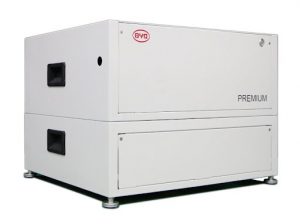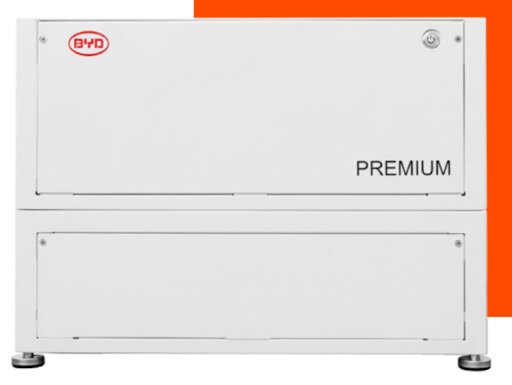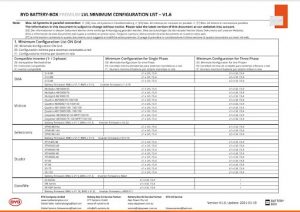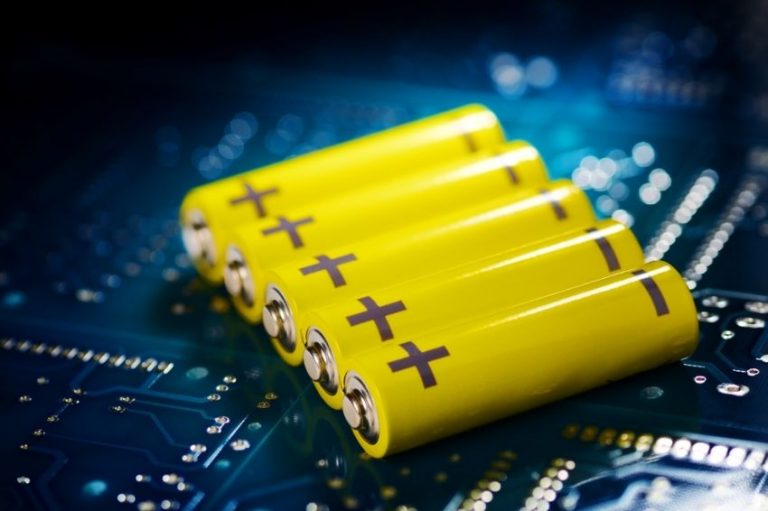Lithium batteries are preferred today for many energy applications.
Much of the success of lithium batteries is due to the electric vehicle market, which in recent years has greatly boosted research and development in battery technologies and also in the area of electronics.
BYD, one of the world's largest manufacturers of batteries and electric vehicles, provides lithium battery bank solutions for the energy storage market, with solutions for homes and commercial and industrial applications.
For example, BYD's Battery-box Premium LVL line allows scalable use in systems from 15.5 kWh up to close to 1 MWh. The product uses technology known as LFP (lithium, iron and phosphate), free of cobalt, which provides greater safety, longer useful life and greater power density.

The importance of battery management system (BMS)
Lithium batteries have superior characteristics to their lead-acid predecessors, which have long dominated the energy storage market.
Some advantages of lithium batteries are their high energy density, their fast charge and recharge capacity, their high efficiency (96%, considering a complete charge and discharge cycle) and their ability to operate with partial states of charge.
However, the advantages of the lithium battery are accompanied by some precautions that require the use of BMS (battery management systems) for safe operation.
Unlike lead acid batteries, which could simply be connected to inverters without much care, lithium batteries must be accompanied by electronic BMS systems.
The BMS (battery management system) is an electronic system responsible for monitoring and controlling lithium batteries. The BMS monitors the voltage, current, temperature and state of charge of the batteries and talks to the inverter via a communication cable.
Communication between the inverter and the BMS system is essential for the safe use of lithium batteries.
Among other things, the BMS is responsible for monitoring and limiting several variables related to battery operation, preventing overload, overvoltage, undervoltage and overtemperature.
In addition to monitoring, the BMS also has the important function of equalizing the battery bank cells. Lithium batteries are always found in the form of banks that contain a certain number of cells connected in series.
The BMS enables cells to remain within safe operating limits and to take action as soon as any of the individual cells begin to go out of bounds. The action taken depends on the complexity of the BMS.
Normally the BMS will disconnect the circuit to prevent the battery from overcharging (if the voltage is too high) or over-discharging (if the voltage is too low).
It will also check whether the cells in the pack have the same voltage, actively acting on some cells so that their voltage is equalized with the others. This individual cell control prevents overvoltage and fire.
Some BMS systems can also monitor temperature and disconnect the circuit if the cells reach dangerous conditions.
In summary, we can list these main functions for a BMS (battery management system):
- Monitor the voltage of the battery bank and individual cells, protecting the cells and the assembly against overvoltage;
- Equalize the voltage of each cell, actively acting on cells that present an imbalance;
- Monitor cell temperature and control the cooling system, if applicable;
- Monitor the charging and discharging current of the battery bank, protecting against overcurrent;
- Estimate the state of charge (SOC = state of charge) of batteries;
- Monitor the depth of discharge of batteries (DOD = depth of discharge), protecting against excessive discharge;
- Monitor the number of charge and discharge cycles and indicate the end of battery life.
Compatibility between battery banks and inverters
The battery bank must be carefully selected and sized during the design phase, depending on the brand and model of inverter that will be used.
It is still possible that the inverter is chosen based on the batteries. Being today one of the most sensitive elements of power systems, and also being a product available from a small number of manufacturers worldwide, we will often be faced with the need to choose an inverter compatible with the battery bank that was selected for the project. .
The importance of choosing the battery bank and carefully selecting the inverter is due to the fact that lithium battery banks have electronic BMS systems, as explained in the previous section.
Lithium batteries do not work without BMS. Battery manufacturers provide the market with integrated, ready-to-use solutions that contain protection devices, circuit breakers, BMS and communication ports for connecting to inverters.
During the operation of the power system, it is important that there is a communication channel between the battery bank and the inverter. This equipment constantly communicates and talks about the state of charge of the batteries (SOC – state of charge) and the maximum current that the batteries allow, for example.
Unlike what we did in the past with lead acid batteries, we cannot randomly choose an inverter brand and a battery brand to form a power system. The manufacturers' manuals (for batteries and inverters) must be consulted to check compatibility between the equipment.
Below is an inverter compatibility table provided by BYD, a battery manufacturer. The table refers to the Battery-BOX Premium LVL family. It can be seen that inverters from the following manufacturers are currently approved for this product: SMA, Victron, Selectronic, Studer and GoodWe.
Other manufacturers may be added over time, as manufacturers interact to provide homologation of compatibility between their products.
In short, whenever you want to use a battery bank in your storage system or hybrid photovoltaic system project, you need to consult the manufacturer about the brands and models of inverters compatible with the product.

















